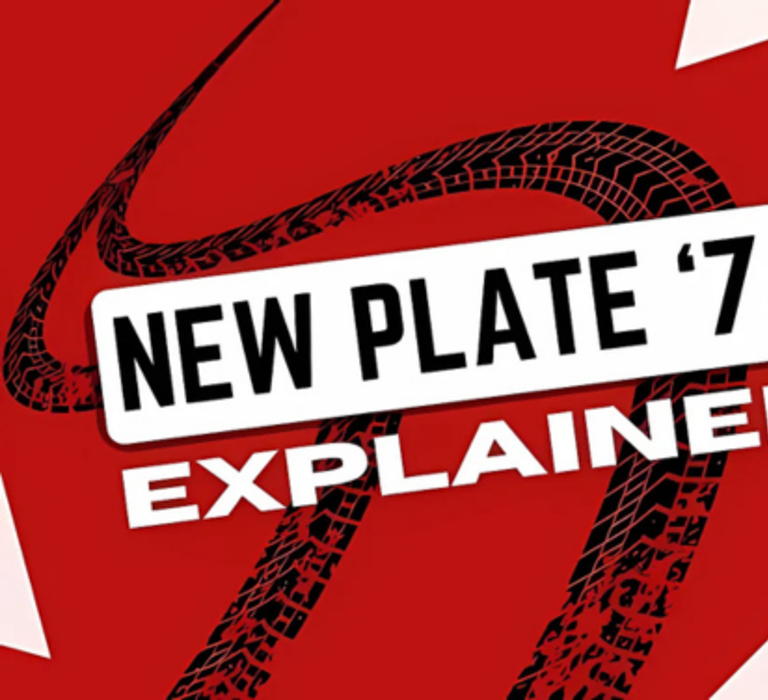It’s all about the ‘74’ plate – but how did we get here?
If we’re lucky enough to go on holiday abroad, we probably can’t help but wonder what the various numbers and letters on vehicle registration plates mean. I often find myself trying to guess – does TN mean Turin? But, many might also be mystified a little closer to home. How have we got to today’s numbering system and what do the digits signify?
How things are today…
OK, let’s start off with the current system which kicked off back in 2001. Once you get your head around it, the methodology is pretty simple.
Let’s take a random number that you might see on a vehicle today, MC24 HGT. That first character ‘M’ is a geographic identifier, or, as the DVLA likes to put it, the first part of a memory tag. M refers to a vehicle registered by a dealer based in the Manchester area. There are 19 of these identifiers, so for example ‘O’ indicates an Oxford sale, ‘E’ stands for Essex, and ‘Y’ shows the outlet was in Yorkshire. The second letter ‘C’, is part two of the memory tag and presumably is only there to offer more combinations.
Then we get to the all important two numbers. This is the ‘age identifier’ and it changes twice a year, on the 1st March and 1st September. The ‘24’ in our example indicates that the vehicle was registered between 1st March and 31st August 2024. The new ‘74’ plate means that registration will have happened sometime between 1st September 2024 and 28th February 2025. Each of these identifiers move ahead one digit every year. Confused? Let’s have a table then…
Finally, the last three letters. They mean nothing at all – they’re just there to provide enough combinations of registration marks (or VRM’s, to give them their official title). You’ll notice that there are no Q’s or I’s,, the theory being that they can easily be confused with other digits, although apparently, Z is fair game.
At some point, this system will become exhausted, but, as my calculation suggests that this won’t be until February 2051, we’ve plenty of time to come up with a suitable replacement.
So, what did we have before then?
Those of us of a certain age, and above, will remember the ‘old’ (or previous) systems very well. I can still recall the registration number of ‘my’ first vehicle, SUT 299M a Mini that my mum bought and, in a rash moment gave me access to the keys.
First introduced in 1963, the system was a little more straight forward than today’s. The first character, in this case ‘S’ was random. The second and third indicated which of the (now long gone) local vehicle licensing offices had been used when registering the vehicle, the ‘UT’ here being one of the prefixes showing that the car was registered in Leicester (there were numerous, apparently random prefix’s allocated to each office). The number that followed, which could be anything between 1 and 999 was random, and the M showed that the car was registered between 1st August 1973 and 31st July 1974, that suffix moving up a letter in the alphabet every August 1st.
A rethink was required in 1983 when the ‘Y’ suffix was reached, on this occasion, Z was deemed not to be worthy of use. Simplicity in the form of a complete reversal was the order of the day so 1st August saw the format A123 AUT introduced, the ‘A’ being the date identifier, and the final two letters showing the location. This continued unchanged until 1999 when the ‘S’ date prefix was cut off in its prime, and the twice yearly March / September change was introduced. This sped up the exhaustion of combinations leading to the introduction of today’s system in September 2001.
Why the change to twice yearly? There was much lobbying at the time that the August 1st change was problematic. It caused a huge peak in Van & Car sales (combined with a deathly quiet June and July as customers waited for the new plate), and for many in the industry summer holidays during school vacation periods were almost impossible to get authorised (‘You want July off, our busiest time for orders? Not a chance. And don’t think about asking for August as you’ll be handing over all those sold vehicles’).
There’s no doubt that the twice yearly change achieved its aim of reducing that single peak, but, somehow the excitement and frenzy of activity in the middle of summer for those selling cars and vans, not to mention the pride and one-upmanship felt by the new owner having that new plate on their drive on August 1st has also been diluted
